“Come ride the little train
That is rolling down the tracks to the junction.
Forget about your cares
It is time to relax at the junction” – Petticoat Junction Theme (Paul Henning/Curt Massey)
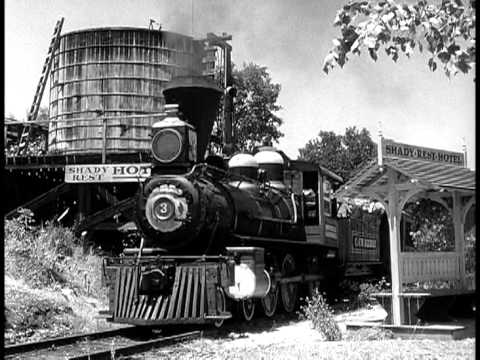
“Every morning, the little old wood-burning train chugged into town. Every afternoon, it chugged out. Where did it go? We weren’t quite sure, but we dreamed about climbing aboard someday, in search of adventure. Its low, mournful whistle was a siren song.” – Paul Henning, reminiscing about his childhood in Missouri.

Paul William Henning was born on September 16, 1911, in Independence Missouri, where he grew up on his family’s farm. As a teenager, while working behind the soda fountain at Brown’s Drugstore, he met Harry S. Truman, who advised the young man to become a lawyer. Not too many years later he graduated from the Kansas City School of Law, but soon thereafter entered the world of radio.
With the ambition of being a singer, Paul Henning started work at KMBC, a commercial AM radio station located in Kansas City, Missouri, where he submitted several scenarios that showcased his tenor voice. A producer at the station explained to him that the type of shows he was suggesting needed paying sponsors, so he went out and found one. Henning convinced the Associated Grocers of Kansas City to finance The Musical Grocers, in which he was featured as a singing grocery clerk. Learning that the station had no budget to hire writers for his show, he became a writer as well as a singer. It was while working at the station that he met his future wife, Ruth Barth, who wrote and acted alongside Henning in several rural-themed radio serials.
It wasn’t long before Paul Henning realized that there were greater opportunities ahead for him as a writer than as a singer. Barth and Henning eventually left Kansas City for Chicago, where they contributed to shows such as Fibber McGee and Molly and Don Winslow of the Navy. And in 1939, they married and moved to Los Angeles.
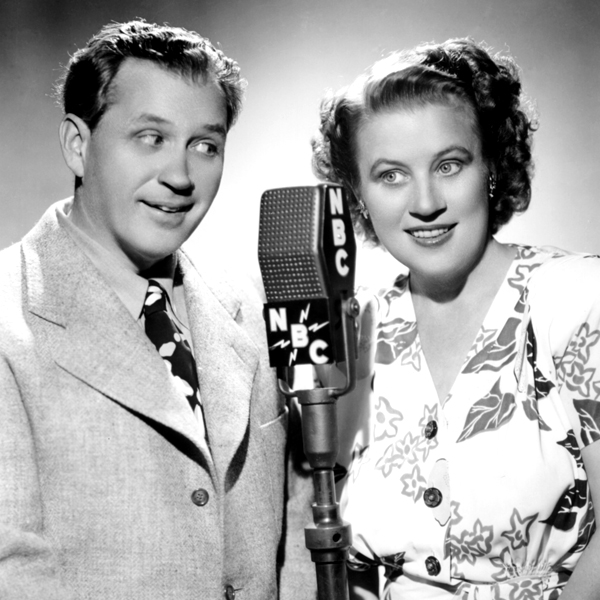
Fibber McGee and Molly 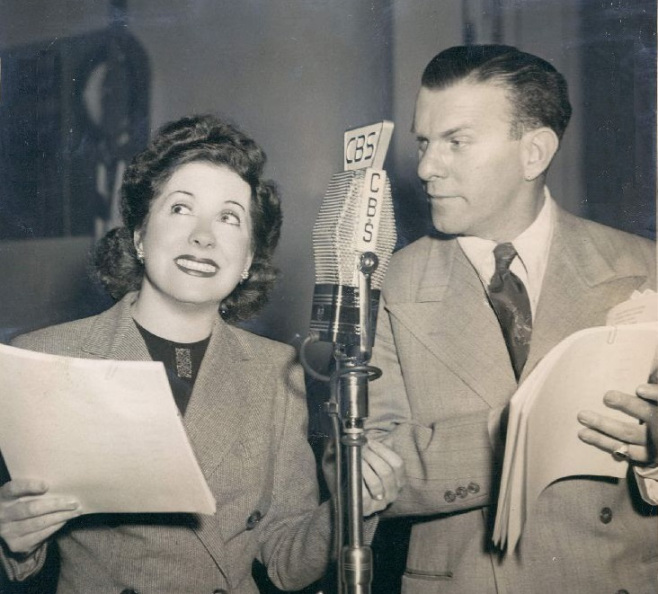
George Burns and Gracie Allen 
Bob Cummings and Ann B. Davis
Over the next 20 years, Henning made a name for himself in radio and then television, as he wrote for a string of programs that included The George Burns and Gracie Allen Show, The Dennis Day Show, The Real McCoys, and The Andy Griffith Show; he was the creator, writer, and producer of The Bob Cummings Show, which was where he met many of the actors who would later be cast in series he created.
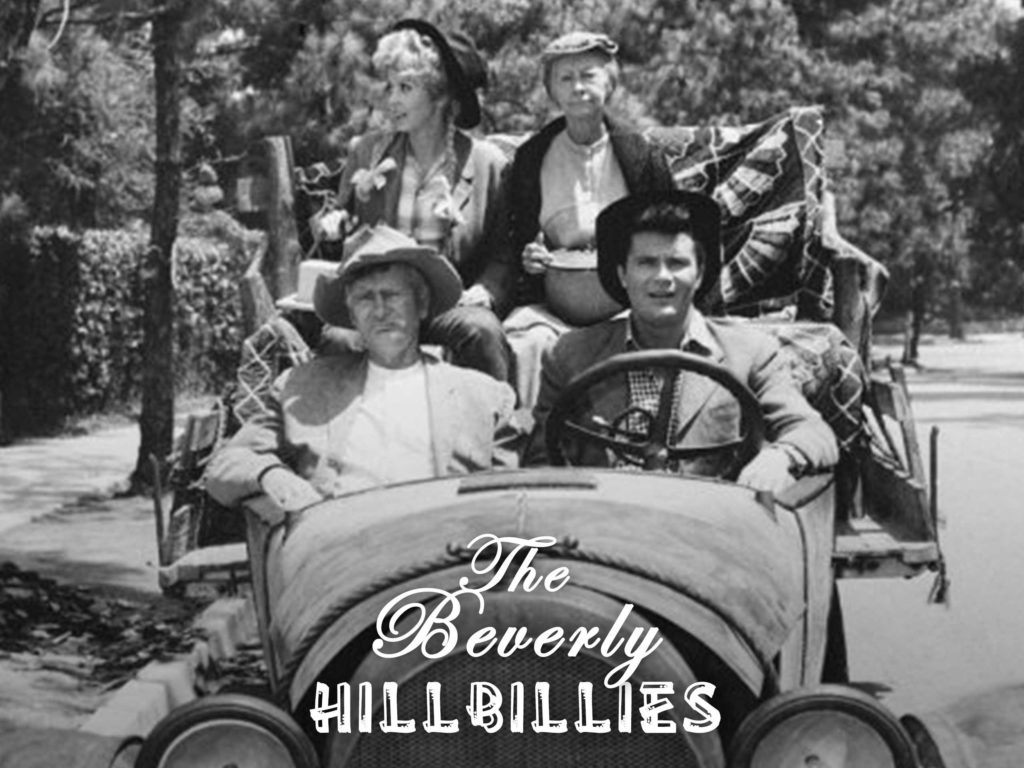
In 1959, Henning was approached by a studio executive in need of more television programming and was asked whether he had any ideas. Remembering his teenage encounters with hill folk during Boy Scout trips to the Ozarks, he created The Beverly Hillbillies, which debuted on CBS in the fall of 1962, and would remain one of television’s most popular shows throughout its nine-season run.
Side note #1:
Paul Henning composed “The Ballad of Jed Clampett”, which was used as the theme song that opened and closed each episode of The Beverly Hillbillies. As the show’s theme, the tune was sung by Jerry Scoggins, who was accompanied by bluegrass duo, Lester Flatt and Earl Scruggs. The song was also re-recorded by Flatt & Scruggs, with Lester Flatt on vocals. Their version spent 20 weeks on the Billboard Country Singles charts, including 3 weeks in the number one position, while reaching #44 on the Billboard Hot 100. The recording would be Flatt & Scruggs’ only #1 hit. (See video below)

Even though The Beverly Hillbillies was poorly received by critics, the show quickly soared to the top of the Nielsen ratings, and during its first two seasons was the number one show in the US, with season two earning some of the highest ratings ever for a half-hour sitcom. Due to this success, when another half-hour prime time slot became available, the network looked to Paul Henning for more ideas. This time the inspiration would come from his wife Ruth’s memories of her own childhood in Eldon, Missouri.
“Lotsa curves, you bet
Even more, when you get
To the junction
(Petticoat Junction)” – Petticoat
Junction Theme (Henning/Massey)
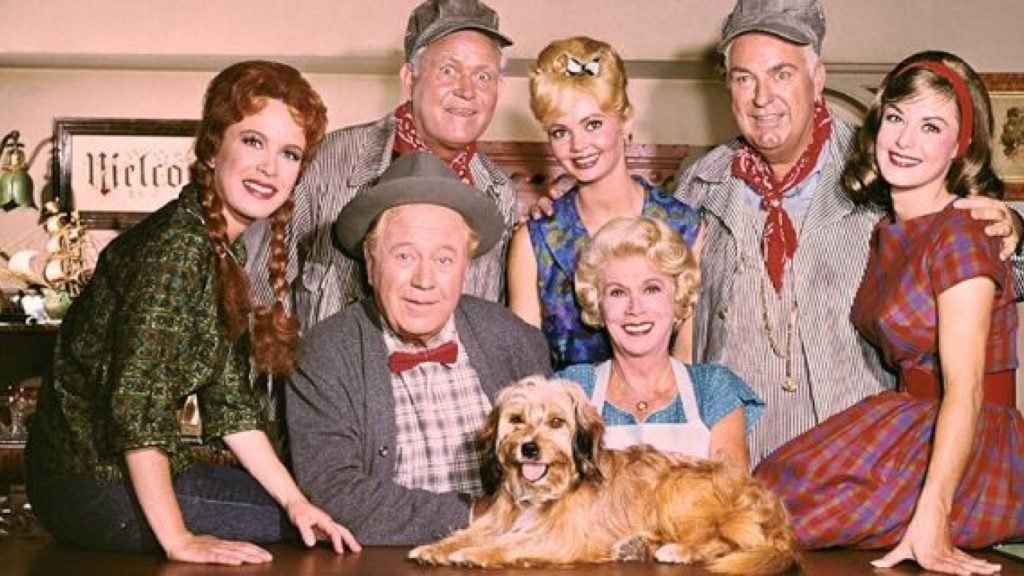
During preproduction for Henning’s new program, titles considered were Ozark Widow, Dern Tootin’, and Whistle Stop, but the name finally settled upon was Petticoat Junction. The show’s focal point was the rural Shady Rest Hotel, run by widowed Kate Bradley, who resided there with her three daughters – redhead Betty Jo, brunette Bobbie Jo, and blonde Billie Jo – as well as her uncle Joe, who mainly slept on the hotel’s front porch, where he dreamed up get-rich-quick schemes. The isolated hotel was served by the Hooterville Cannonball, an 1890s steam-driven train operated by engineer Charley Pratt and fireman/conductor Floyd Smoot.
Henning explained that the basis for the show came from Ruth Henning’s recollections of her grandparents’ hotel in Eldon Missouri. Once known as the Rock Island Hotel, the establishment stood within walking distance of a stop on the now-abandoned Chicago, Rock Island, and Pacific Railroad line that ran through the town. Ruth’s mother, Alice (Burris) Barth had told her many stories about the renamed Burris Hotel and about growing up in Eldon. In addition, Ruth had fond remembrances of her own adventures during visits with her grandmother. Together, these stories provided the show’s premise.
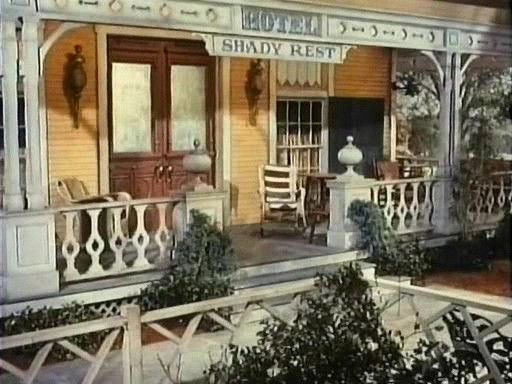
“There’s a little hotel called the Shady Rest at the junction
(Petticoat Junction)
It is run by Kate, come and be her guest at the junction
(Petticoat Junction)
And that’s Uncle Joe, he’s a-movin’ kind of slow at the junction
(Petticoat Junction)” – Petticoat Junction Theme (Henning/Massey)
Linda Kaye Henning – Paul Henning’s daughter, and the actress who would portray Betty Jo Bradley throughout the show’s seven seasons – has stated that her father, “wrote the series for Bea Benaderet.” Believing that Benaderet had more than paid her dues in the entertainment industry, Paul Henning created Petticoat Junctions’s Kate Bradley as the first leading role for the veteran actress.

Bea Benaderet had begun her career in radio in the 1930s, working with Orson Welles, Jack Benny, George Burns, and Lucille Ball. She was one of the featured voices for Warner Bros’ animated features, but not being under contract with the studio, as was Mel Blanc, she received no onscreen credits for her work; she was the voice of Betty Rubble on television’s The Flintstones from 1960-64. Benaderet was also Lucille Ball’s first choice for the role of Ethel Mertz in her upcoming sitcom I Love Lucy, but as she was already under contract for the television adaptation of The George Burns and Gracie Allen Show, she had no choice but to turn down the offer. Bea Benaderet would remain with Petticoat Junction through 1968 when she passed away from lung cancer at the age of 62.
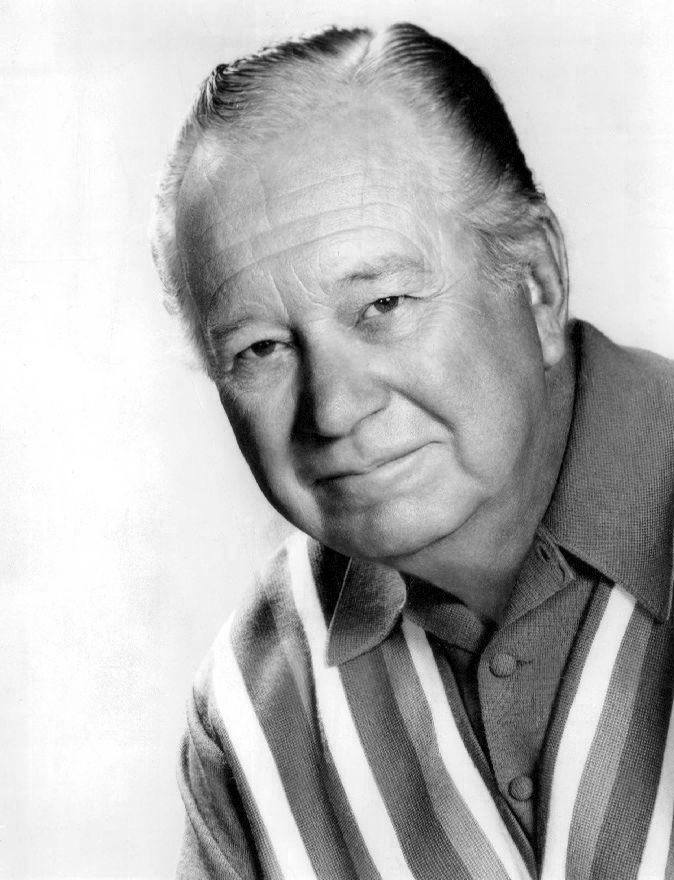
The part of Uncle Joe Carson was played by actor Edgar Buchanan, who was the only cast member to appear in all 222 episodes of Petticoat Junction. Buchanan had graduated from dental school in 1928, but after relocating to Southern California, he joined the Pasadena Playhouse as an actor, and appeared in his first film in 1939, at the age of 36. Buchanan appeared in over 100 films, including countless westerns, and would play the lead role in the 39-episode syndicated Western television series, Judge Roy Bean. Following Petticoat Junction, Buchanan starred in the 1974 movie Benji, along with Higgins the dog, who had been one of his “co-stars” on Petticoat Junction.

Kate Bradley’s daughters – Betty Jo, Bobbie Jo, and Billie Jo – were played by actresses Linda Kaye Henning, Pat Woodell (seasons 1 & 2), and Jeannine Riley (seasons 1 & 2) respectively, with other actresses filling the Bobbie Jo and Billie Jo roles in later seasons.

Side note #2:
In the season-one episode “The Ladybugs”, the three Bradley girls, along with their friend Sally Ragsdale (Sheila James) form a Beatlesque band called The Ladybugs at the urging of Uncle Joe. In the episode the group wears mop-top wigs, matching outfits, and performs The Beatles’ “I Saw Her Standing There”, changing the lyrics from “her” to “him”. On March 22, 1964, the four actresses performed the same song as The Ladybugs on The Ed Sullivan Show, where the host invited his viewers to tune-in later that week to view their episode. (See video below)
Although as a young boy I may have been captivated by the striking blond actress Meredith MacRae, who portrayed daughter Billie Jo Bradley in seasons 4-7, to my train-loving tastes, the show’s main attraction was always the Hooterville Cannonball.

“When they hear the dinner bell
From the Shady Rest Hotel, at the junction
Folks will walk a country mile
For the chicken country style, at the junction
But it’s easy to observe
All the pretty girls that serve at the junction
(Petticoat Junction)” – Petticoat Junction Theme (Henning/Massey)
Kate Bradley’s Shady Rest Hotel was situated on a branch line of the fictional C. & F.W. Railroad, where the demolition of a trestle several years earlier had completely isolated the branch from the main railway. This left the Hooterville Cannonball providing service only to the towns of Hooterville and Pixley. With the Shady Rest Hotel located roughly halfway between the lines two termini, Petticoat Junction served as a water stop for the steam-driven Cannonball.
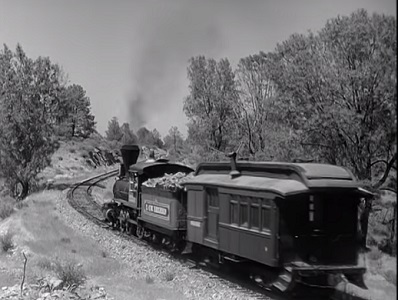
Consisting only of an 1890s locomotive and a combination car (with a baggage and passenger section) the Hooterville Cannonball essentially functioned as a taxi service for the residents and guests of the Shady Rest Hotel. A familiar theme in numerous episodes of the show was the executives of the railroad attempting to shut down the Cannonball’s operation.

The Cannonball’s engineer, Charley Pratt, was portrayed by actor Smiley Burnette, who had begun his career as a country music performer, as well as a sidekick to Gene Autry, Roy Rogers, and other B-movie cowboys. Charley Pratt would remain at the Cannonball’s throttle through the end of season four until actor Burnette passed away from Leukemia. Charley Pratt’s death was written into the storyline of season 5, as Floyd Smoot (Rufe Davis), who had served as the train’s fireman/conductor, took over as engineer in addition to his former duties. In later seasons of the show, Floyd Smoot would be replaced by another engineer, and eventually, the Cannonball’s driver would become more of a minor character.
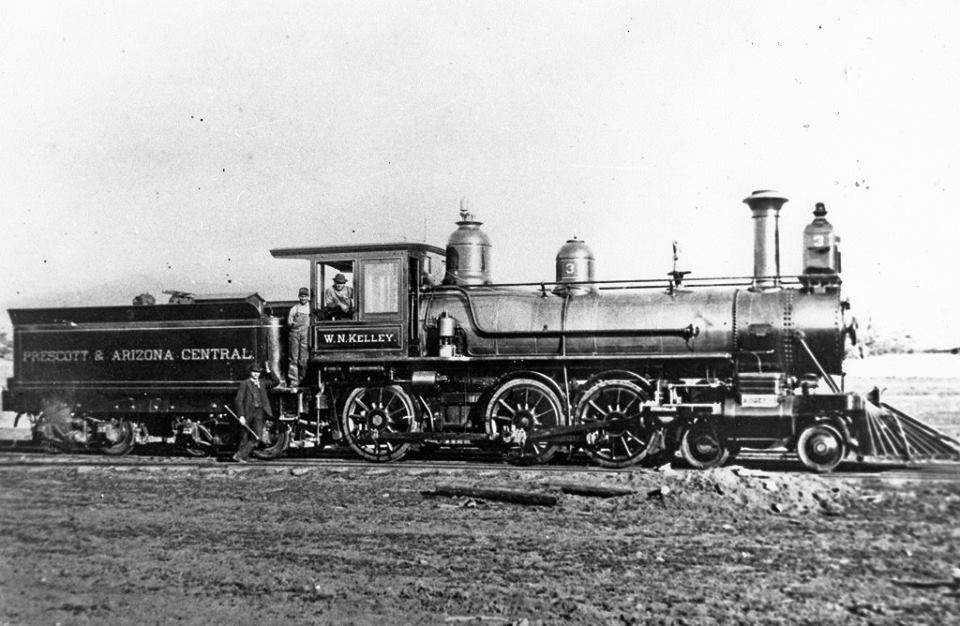
Finally, the Hooterville Cannonball was portrayed by the grande dame of film locomotives, Sierra Railway No. 3, which has been called the “Movie Star Locomotive”. Manufactured in 1891 by the Rogers Locomotive and Machine Works of Paterson, New Jersey, the machine was specifically built for the Prescott & Arizona Central Railway (P&AC) as their locomotive #3 and was named W.N. Kelley after that company’s treasurer. When the P&AC went bankrupt in 1893, its owner, Thomas S. Bullock, relocated to California bringing the No. 3 along with him, eventually forming the Sierra Railway Company of California to serve the timber industry. The locomotive became known as Sierra No. 3, the name that it retains to this day.

Sierra No. 3 made her screen debut in Tom Mix’s feature, The Terror, a silent film released in 1920, while she continued to function as a workhorse for the railroad. Taken out of operation during the Great Depression, she narrowly avoided being scrapped during WWII. A rebuild by the Sierra Railroad Company was completed in 1948, and No. 3 officially returned to service heading a Railway and Locomotive Historical Society sponsored excursion train. Over the next 50 years, she would appear in dozens of films, TV shows, and commercials, including High Noon, The Great Race, The Great Train Robbery, Finian’s Rainbow, Bound For Glory, The Long Riders, The Apple Dumpling Gang, Pale Rider, Unforgiven, and Back to the Future Part III, as well as almost any television western you can name.
In 1982, Sierra Railroad’s locomotive facilities in Jamestown – including locomotive No. 3 – were acquired by the State of California and became Railtown 1897 State Historic Park. In 1995 No. 3 was once again removed from service until renovations could be made to her boiler to meet upgraded safety standards. When the cost of rebuilding became prohibitive, Clint Eastwood – who had worked with Sierra No. 3 in several of his movies, as well as his early series Rawhide – contributed to the fundraising appeal, describing No. 3 as “like a treasured old friend.” Eastwood wrote, “Sierra No. 3 resides at Railtown 1897 State Historic Park. It is housed in the original roundhouse which is still in use. Together these two assets provide a rare opportunity to experience history just as it was 109 years ago.”

The final cost of the rebuild was $1.6 million, and Sierra No. 3 was restored to her 1929 appearance when she appeared in the film The Virginian. She was officially returned to service on July 10, 2010.
At the outset of production for Petticoat Junction, Paul Henning believed the train to be an “important character” and hired railroad historian Gerald M. Best to keep an eye on the details. Henning stated that “the train’s weekly appearances on TV might set the space-age back 50 years and drive train buffs insane with delight, but without it, our show would lose its character image.”
“When I started Petticoat Junction, I had one aim. If people thought to themselves, ‘Gee, I’d like to spend a few days at that beat-up hotel’ or ‘I’d like to ride that funny little railroad,’ I knew we would make it.” – Paul William Henning (1911-2005)

Below is a video that includes the history of Sierra No. 3 as well as details of its restoration.
Sources:
https://en.wikipedia.org/wiki/Paul_Henning
https://en.wikipedia.org/wiki/Petticoat_Junction
https://en.wikipedia.org/wiki/Hooterville_Cannonball
https://en.wikipedia.org/wiki/Sierra_No._3
https://en.wikipedia.org/wiki/Bea_Benaderet
https://en.wikipedia.org/wiki/Edgar_Buchanan
https://en.wikipedia.org/wiki/Smiley_Burnette
All photos sourced through internet searches, none belong to the author.
